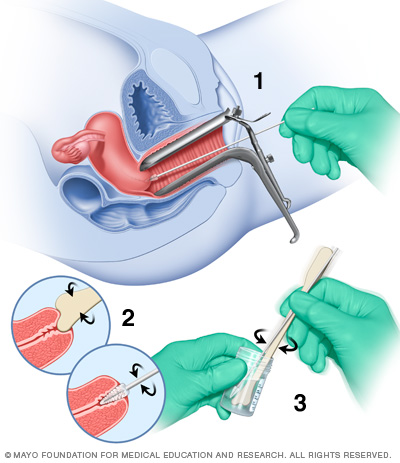A pelvic exam is performed in your doctor's office and takes only a few minutes.
You'll be asked to change out of your clothes and into a gown. You may be given a sheet to wrap around your waist for added privacy. Before performing the pelvic exam, your doctor may listen to your heart and lungs and perform a breast exam.
During the pelvic exam
During the pelvic exam, you lie on your back on an examining table with your knees bent and your feet placed on the corners of the table or in supports called stirrups. You'll be asked to slide your body toward the end of the table and let your knees fall open.
A pelvic exam generally includes:
-
External visual exam. First, your doctor visually inspects your vulva, looking for irritation, redness, sores, swelling or other abnormalities.
-
Internal visual exam. Next, your doctor uses a speculum — a plastic or metal-hinged instrument shaped like a duck's bill — to spread open your vaginal walls and view your vagina and cervix. The speculum may be warmed before it's inserted.
Inserting and opening the speculum causes pressure that can be uncomfortable for some women. Relax as much as possible to ease discomfort, but tell your doctor if you're in pain.
-
Pap test. If your pelvic exam includes a Pap test (Pap smear), your doctor collects a sample of your cervical cells before removing the speculum.
-
Bimanual exam. Because your pelvic organs, including your uterus and ovaries, can't be seen from outside your body, your doctor needs to feel (palpate) your abdomen and pelvis for this part of the exam. To do this, your doctor inserts two lubricated, gloved fingers into your vagina with one hand, while the other hand presses gently on the outside of your lower abdomen.
During this part of the exam, your doctor checks the size and shape of your uterus and ovaries, noting points of tenderness or unusual growths. After the vaginal exam, your doctor inserts a gloved finger into your rectum to check for tenderness, growths or other irregularities.
Usually, at each step, your doctor tells you exactly what he or she is doing, so nothing comes as a surprise to you.
After the pelvic exam
After the pelvic exam is over, you can get dressed and then discuss with your doctor the results of your exam.

